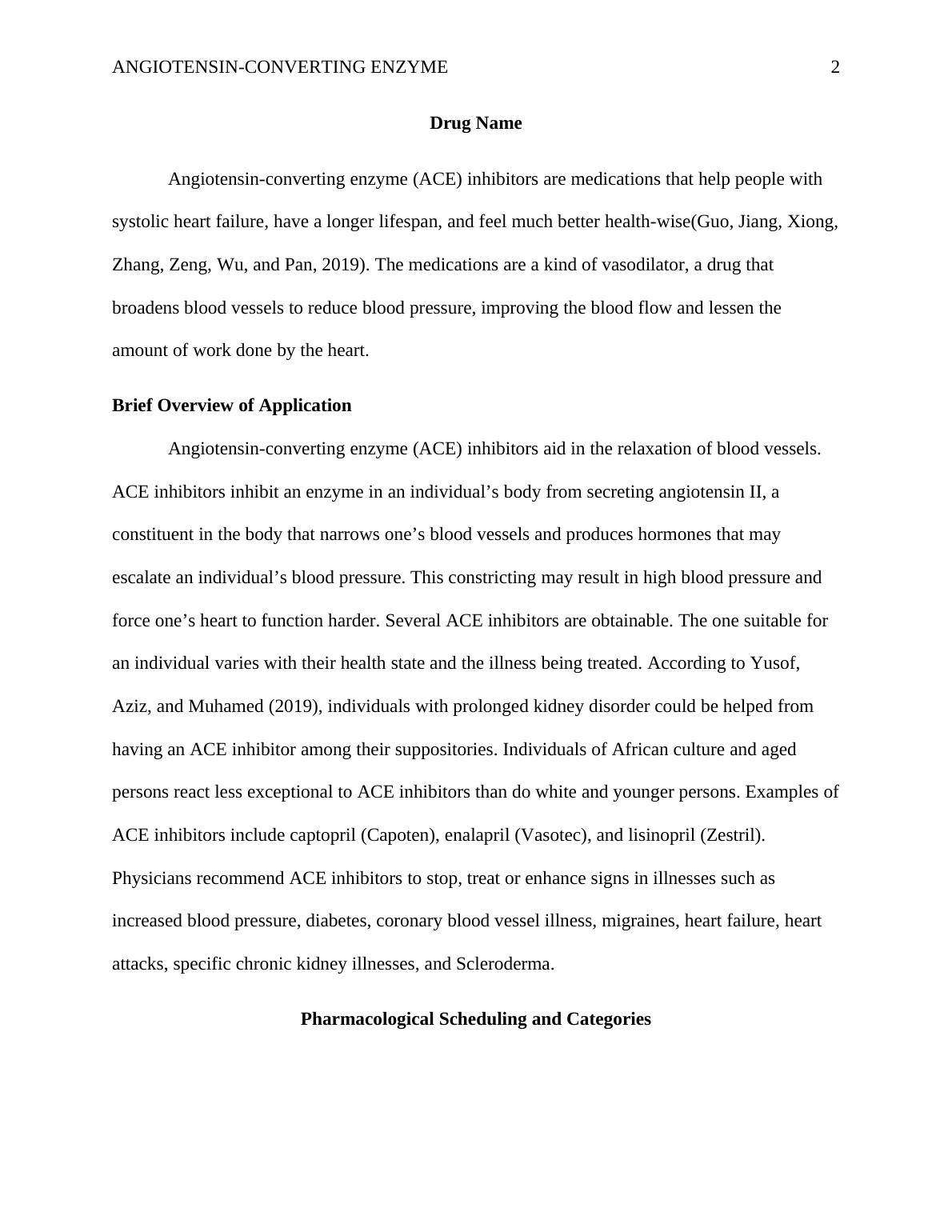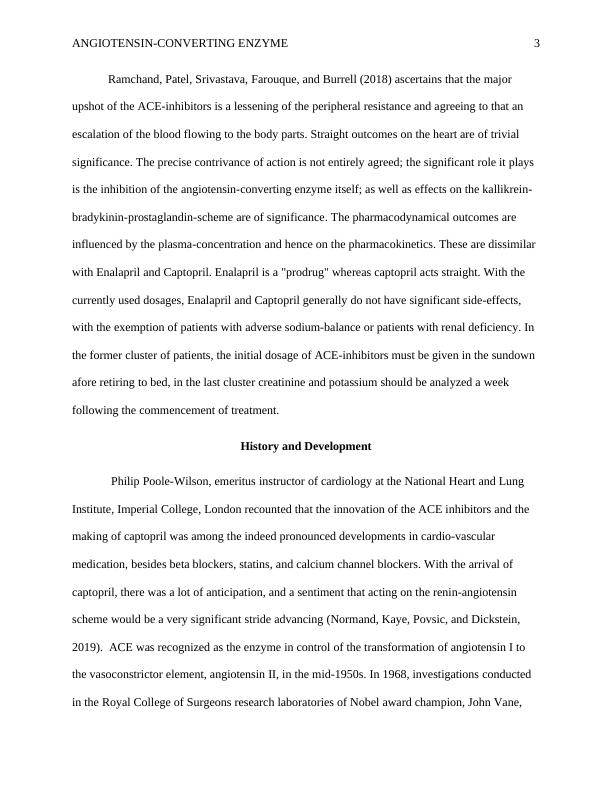Angiotensin-Converting Enzyme: Mechanism, Application, and Side Effects
This document provides information about the criteria for passing grades, attendance requirements, and an introduction to angiotensin-converting enzyme (ACE) inhibitors in the context of systolic heart failure.
10 Pages2581 Words66 Views
Added on 2023-01-13
About This Document
This document provides an overview of angiotensin-converting enzyme (ACE) inhibitors, including their mechanism of action, application in systolic heart failure, and side effects. ACE inhibitors help in reducing blood pressure and improving blood flow.
Angiotensin-Converting Enzyme: Mechanism, Application, and Side Effects
This document provides information about the criteria for passing grades, attendance requirements, and an introduction to angiotensin-converting enzyme (ACE) inhibitors in the context of systolic heart failure.
Added on 2023-01-13
ShareRelated Documents
End of preview
Want to access all the pages? Upload your documents or become a member.
Captopril: a potent drug which is a competitive inhibitor on the angiotensin converting enzyme
|5
|1792
|195
Role of RAAS in Cardiovascular System | Essay
|5
|1258
|25
Ramipril: Mechanism, Indication, and Adverse Effects
|4
|622
|36
Nursing Care and Management Essay
|7
|2121
|125
Nursing Management of Hypertension
|6
|1308
|122
Nurse Pharmacology Assignment Report
|4
|569
|18



